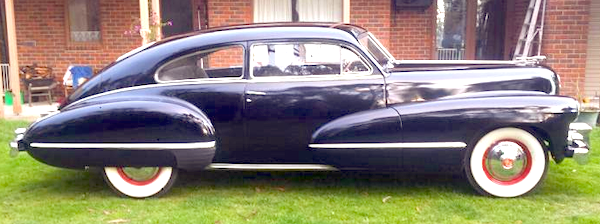The Asymmetrica label was appropriate, thanks to some body shaping only on the driver's side of the car. I have no objection to this in principle: it depends on how it is done.
For example, above is a 1963 Studebaker Avanti that I photographed in Baltimore many years ago. Note the raised part of the hood positioned in front of the steering wheel. This asymmetrical solution works well.
And what about the XNR's asymmetry? Let's take a look at some factory photos.
Seen from behind, the asymmetry is emphasized by the cross-shaped rear bumper. This was a show car feature not likely to have survived had the XNR ever entered production. That is, the upper vertical element has little realistic protective function. (Okay, if it were resilient, it might help the driver's head from being smashed from behind by the headrest fin in a rear-end collision.)
The front lacks the cross theme. Instead, there is somewhat puny bumper that surrounds a grille that is substantially blocked by quad headlights. This also would not likely see production.
An exhaust pipe with a muffler is on the driver's side of the car only. This is a sporty touch, but the hot piping might burn the leg of someone standing too close to it.
The asymmetrical feature on the hood has what seems to be a functional air scoop at its front. It then extends to the passenger compartment where it becomes a short hood over the top of the instrument panel. This has a logic to it, though I feel that the shaping is too heavy, unlike the Avanti's hood décor.
Fenders are actually decorative items canted outwards to tight-radius character lines. This is in keeping with the passenger compartment body sides that also are wider at the top than at the bottom. Viewed from the side, as in this photo, the car seems lean and mean. But in views from higher, as in some of the images above, the car seems wide and somewhat heavy despite the relief of the front and rear asymmetry sculpting.
My conclusion is that the XNR is a example of Exner's declining ability to style pleasing automobiles. There are too many visual gimmicks that don't always work well together.

























































